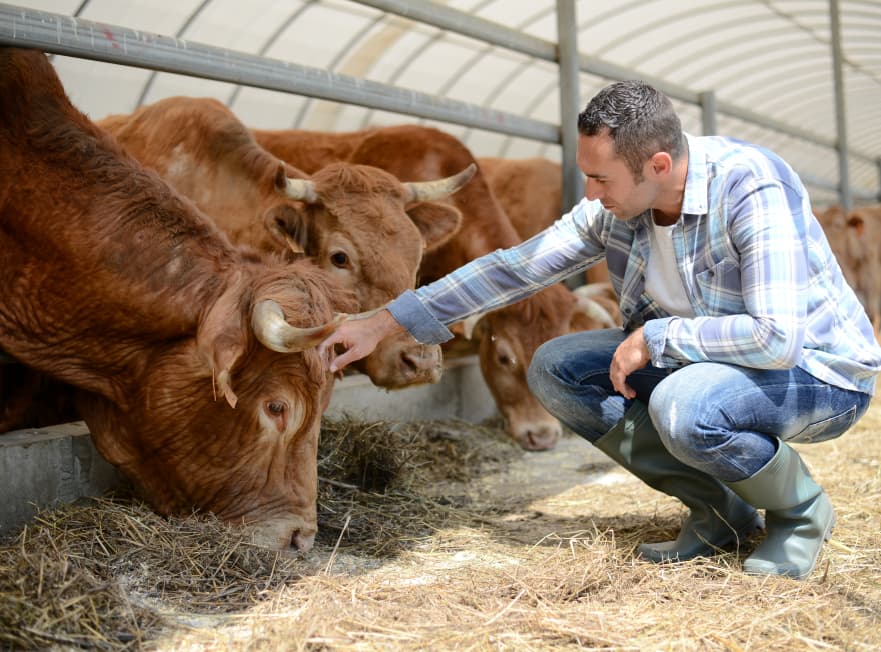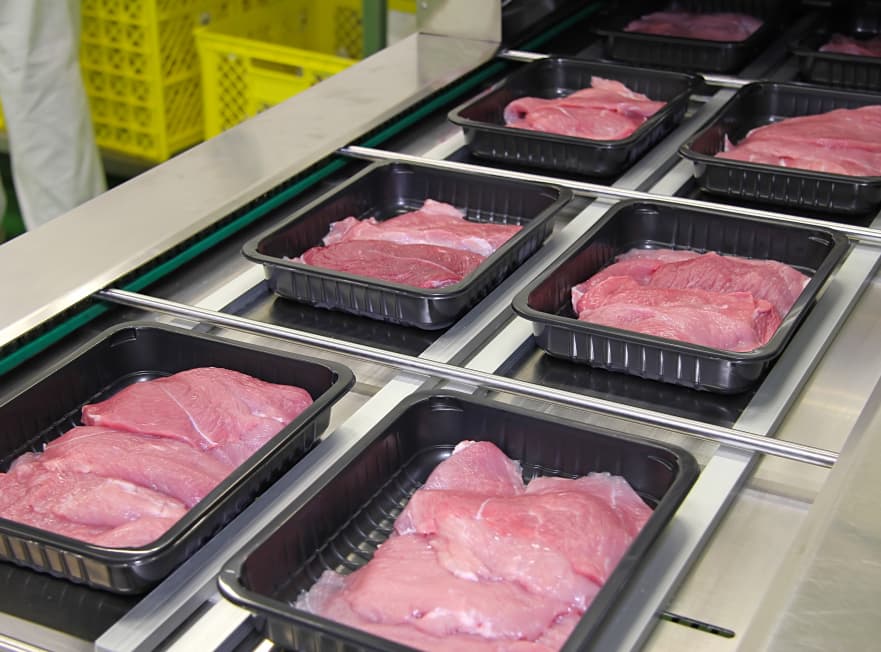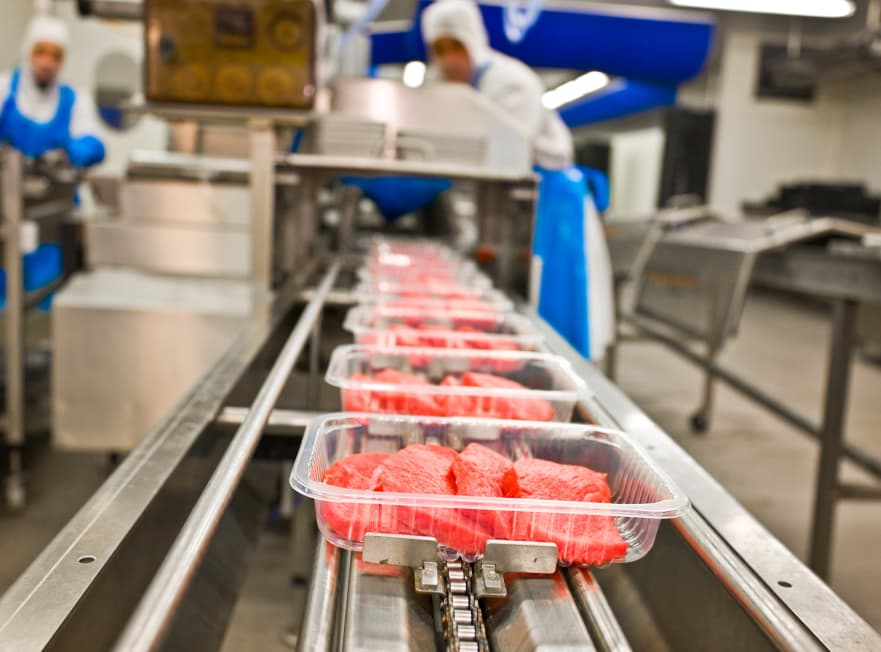Animals
Beef in Europe is produced in accordance with the standards set by the European Union regulations, which oblige Member States to comply with the rules of cattle breeding and meat production under the cross-compliance regulations. This means that every farmer, breeder and processor in the EU is bound by the same standards and the same law. In the field of beef production, they concern, among others, animal welfare, environmental protection, combating infectious diseases (including spongiform encephalopathy), cattle identification and registration, and meat origin labelling.
The European Union has been developing a coherent, safe and ethical system of livestock breeding for several decades. Animal welfare constitutes its foundation, which guarantees optimal keeping and growing conditions. The legal basis for welfare is Directive 98/58/EC of 1998, which guarantees animals the so-called “five freedoms”, i.e. freedom:
- from hunger and thirst,
- from discomfort,
- from pain and disease,
- to express natural behaviour,
- from fear and stress.

These regulations were expanded and supplemented in the following years. Freedom from hunger and thirst is the source of the EU’s ban on the use of in-feed antibiotics as well as synthetic stimulants and hormones, which accelerate animal growth.
European cattle is therefore fed with natural fodder without additives to accelerate their growth. It is also forbidden to implant animals with implants that gradually release hormones in order to increase their body weight quicker.
The guarantee of freedom from discomfort and freedom to express natural behaviour in practice means the creation of detailed guidelines that provide animals with appropriate living conditions. Livestock buildings for cattle must meet specific requirements for providing animals with a minimum and optimal air temperature, optimal humidity, adequate air flow, lighting and stall dimensions. Reducing stressful conditions is related to providing the animals with appropriate breeding conditions, as well as the care of qualified personnel.
When it comes to freedom from hunger and thirst, the EU adheres to the principles of proper livestock nutrition. In the nutrition of cattle, feed adapted to the stages of animal development is used, and in adult animals, specially composed nutritional doses are used, depending on the body’s needs, health and performance functions of the animal. In Europe, beef cattle live on natural pastures for most of the year. Feeds are under constant veterinary supervision – they are checked for the absence of prohibited additives and meeting microbiological standards.
Each herd of cattle is supervised by the state veterinary inspection, which controls, among others, the observance of hygienic rules in cowsheds, feeding rules and general conditions for keeping animals. It is an implementation of the principle of freedom from pain and disease from the aforementioned Directive 98/58/EC. Veterinary supervision also covers the reproduction of animals and their general health, including preventing the spread of contagious diseases in cattle.

The systems guaranteeing safety of food production in the European Union include:
- Good Manufacture Practice (GMP) and Good Hygienic Practice (GHP) – covering food production standards, such as: location and surroundings of the plant, buildings and rooms and their functional layout, raw materials and materials, machinery and equipment, storage and transport, staff hygiene;
- Good Laboratory Practice (GLP) – a system ensuring food quality by testing and monitoring its composition;
- Good Agricultural Practices (GAP) – covers activities carried out at the stage of breeding cows and pigs;
- Hazard Critical Control Points (HACCP) – the system comes down to the detection and elimination of threats at the time and place of their origin;
- International Organization for Standardization (ISO) – ensures full product standardization;
- Rapid Alert System for Food and Feed (RASFF) prevents the risk of food safety hazards.
QUALITY STANDARDS

At the beginning of the 21st century, the idea of “farm to fork” was developed at the EU level, guaranteeing a high level of safety at all stages of the production and distribution process of food products placed on the market. In 2004, as part of the farm to fork approach, a new legislative framework known as the “hygiene package” was adopted. This package places the responsibility for hygiene in the production of foodstuffs directly on the different actors in the food chain, through a self-regulating system using the HACCP method (“Hazard and Critical Control Point Analysis”), monitored by official controls by competent authorities. This allows for the maintenance of restrictive sanitary and hygienic conditions on the premises of the plant, monitoring of individual stages of production, as well as the detection and removal of possible hazards occurring in the entire food production process.
Cattle is slaughtered according to strict procedures regulated by national legislation. Humanitarian stunning before slaughter is mandatory and is intended to rapidly disrupt brain function. This reduces stress of the animal during slaughter and blocks any pain. Slaughter is carried out in specialized slaughterhouses by trained personnel. The slaughter procedure consists of many activities dictated by humanitarian, hygienic and organizational reasons, and also meets various conditions for the product to be safe for the consumer (in accordance with Regulation (EC) No. 853/2004). Immediately after slaughter, employees perform initial carcass cutting, and a veterinarian performs a veterinary examination of meat. At this stage, the classification of carcasses according to the SEUROP system is also carried out, collection and initial conservation of edible and inedible by-products of slaughter, as well as collection and protection of waste.
Beef is then subjected to processes aimed at getting its flavour and obtaining the desired meat quality parameters. These processes are referred to as meat seasoning.
(SEE MORE IN THE BEEF MEAT ADVANTAGES SECTION)

GREEN AND INNOVATIVE ECONOMY
Production of European beef is also environmentally friendly. In 2020, the European Union adopted the European Green Deal strategy – a program aimed at achieving EU climate neutrality in 2050. The Green Deal applies to virtually all areas of the economy and sets out specific goals and actions to achieve them.
In agriculture, the following goals are set: reducing the use of pesticides and fertilizers, reducing water consumption in technological processes, reducing greenhouse gas emissions as a side effect of agricultural production, or increasing the volume of organic production. The diversification of fodder crops, which is part of the assumptions of the Green Deal, means acting for biodiversity. The greater number of plant species cultivated means an even more diversified animal feed base, which affects the taste of meat. This does not mean, however, that the implementation of the Green Deal is a distant future – these assumptions are already being implemented. The technological solutions for the reduction of greenhouse gases (including construction of biogas plants producing energy and heat from agricultural by-products, such as biomass or animal excrements), which have been implemented for several years, have a number of advantages: cleaner air, energy savings and lower production costs. As a result, all these activities translate into a continuous quality change – the resulting product, i.e. beef, has better and better quality parameters and is created with greater respect for the environment.



)
)